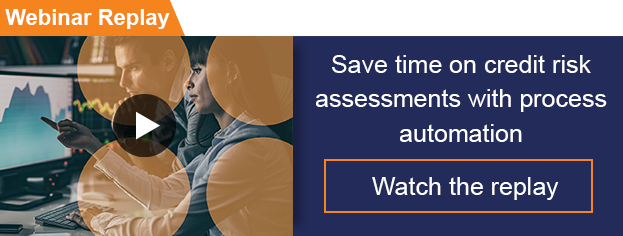Credit managers and their teams work consistently hard to ensure credit risk processes are ruthlessly followed and bad debts are reduced. Qualifying credit risk, allocating payment terms and making credit-based decisions is a large part of the job. They’ll also continuously monitor and assess active customers for negative indicators and work towards resolution of payment problems as well as being responsible for securing high risks through guarantees, insurance or factoring agreements.
It’s a lot to do, and this work involves a lot of human interaction. It is often time consuming, costly, open to error and paper based. It therefore makes perfect sense to automate at least some of these credit activities to enhance productivity and job satisfaction?
Why should I automate my credit management processes?
There are many reasons why you should consider automating some key aspects of your credit management processes.
Reduce repetitive tasks: Scaling up your organisation will require effective process optimisation and reducing any time consuming and repetitive manual-based activities. Automating repetitive low-skill tasks will effectively free up your resources to deploy on higher value-based workloads and reduce error rates, enabling your organisation to grow efficiently and successfully.
Enhance the data quality: Enhanced customer portfolio management across your whole customer base, rather than just the large higher risk ones, will require improving the quality and coverage of your data. And you’ll need rigorous documentation and auditability to avoid potential legal issues.
Keep up to date: Our credit management software suite, Ready4 Credit Management, is entirely compatible with all SAP releases. This means that wherever you are on your digital transformation journey, your credit management software will work seamlessly.
So, what processes can I automate?
Digital transformation and productivity gains are on everyone’s agenda. With a particular focus on credit management, what are the specific “quick wins” that would be easy to automate.
Background checks for risk assessment: Initial credit scoring, assessment and credit limit proposals for new a customer need to be carried out as early as possible to avoid any issues later on. But so often background checks are only carried out on larger customers who are deemed higher risk, purely because of the time and workload to manually undertake this task. Background checks for risk assessment are faster and easier with automated information retrieval, making it possible to do checks on smaller customers too which often amount to a higher percentage of the customer base.
Faster Monitoring: Once a customer is active, monitoring becomes critical to ensure the credit team get notified of changes in credit risk and solvency. This usually involves subscribing to a credit agency who will send out regular updates on selected organisations. But with automation, you can process, manage and integrate the data according to your own monitoring and notification requirements.
Credit Application decisions: Many of the decisions about credit applications can also be automated, especially where you have comprehensive customer data and clear credit policy definitions in place which enable automated approve or decline requests. The detection of guarantees, payment history and negative indicators can also all be automated.
Keeping a close watch on payments: With Receivables’ monitoring and collection, the system can suggest individual cases that need your attention, based on rules, detecting data for example on open dispute cases where you may need to monitor incoming payments.
Automated dunning: Many customers are moving away from the traditional dunning process towards a more ‘personalised’ and direct approach, sometimes even picking up the telephone to chat to a customer. An automated dunning process will use your customer data to identify customers that need dunning communications, and pre-set templates can be personalised as required.
Automated collection notification: And finally, when it comes to the recovery of bad debts, collaboration with collection agencies is automated. On your behalf the agency will collect overdue invoices, provide you status updates, communicate with the debtor and negotiate new payment terms. At the end of the process the agency will pay back all amounts collected after deducted some service fees.
Automation in credit management delivers widespread productivity gains, ranging from reduced effort in new customer business, faster processing of smart credit-application decisions to avoid bad debts. With reduced manual intervention combined with speed and accuracy, your credit management function can digitally transform, keeping pace with other areas of your organisation.



